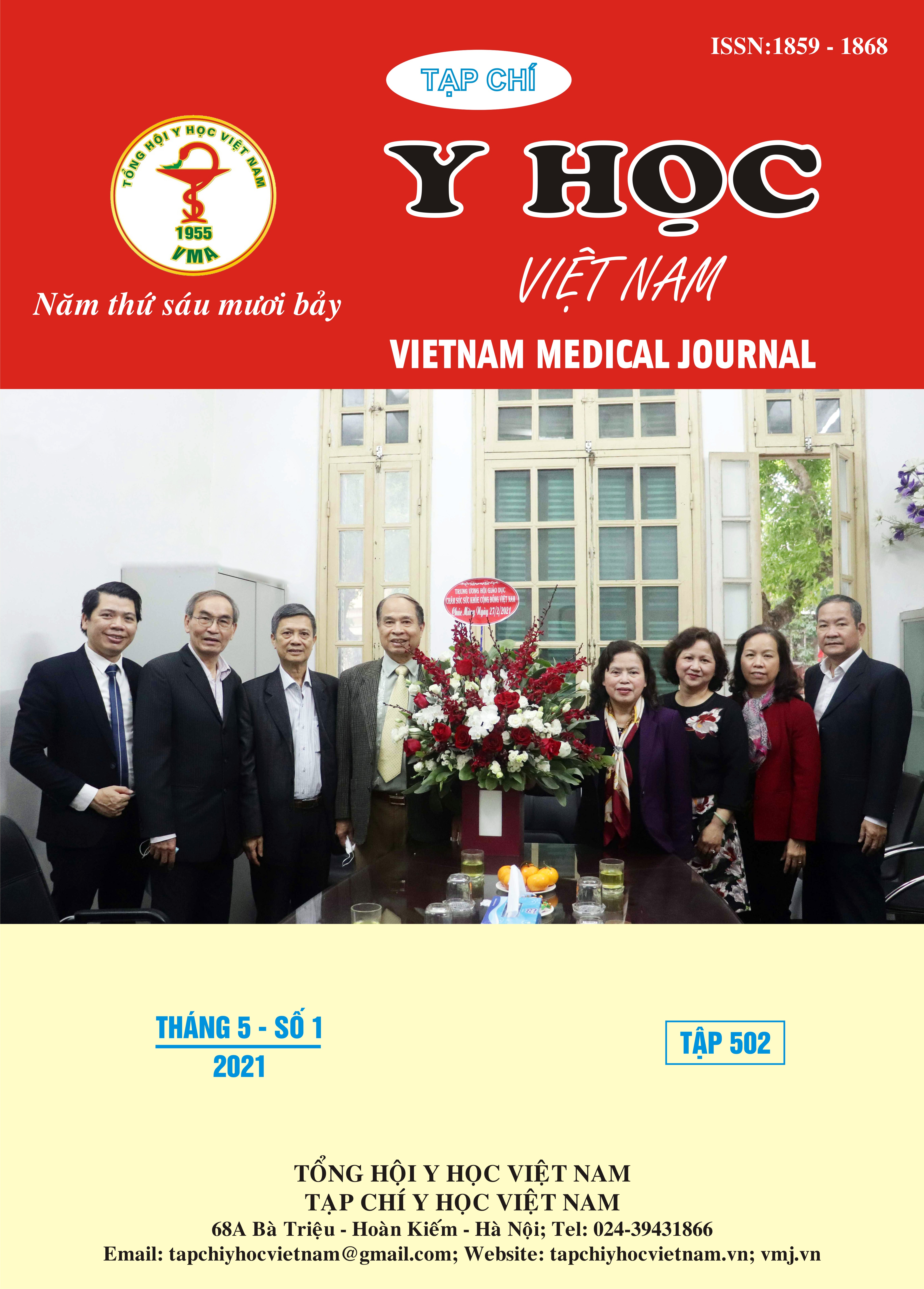SUCCESSFUL PREDICTION FACTORS OF AVAPS IN PATIENTS WITH THE ACUTE EXACERBATION OF CHRONIC PULMONARY OBSTRUCTIVE DISEASE (COPD) ON NON-INVASIVE MECHANICAL VENTILATION
Main Article Content
Abstract
Objective: to identify a successful prediction factors in patients with exacerbation of chronic obstructive pulmonary disease (COPD) who were on noninvasive mechanical ventilation by Average Volume Assured Pressure Support (AVAPS) mode. Methods: A prospective, pre & post-intervention comparison study on 40 non-invasive ventilated patients with COPD exacerbations admitted to the Emergency Department of Bach Mai Hospital from May 2019 to August 2020. The main variables such as age, sex, blood gas indices: pH, PaCO2, PaO2, HCO3, PaO2/FiO2 ratio, mechanical ventilation parameters: Vt, Vte, PIP, Leak were collected at the timelines: before AVAPS, 3 hours, 6 hours, 12 hours after AVAPS. Successful ventilation was defined as no requirement for endotracheal intubation, clinical and blood gas stability within 24 hours. Results: The study on 40 patients (mean age 70.3 ± 9.87 years; 7.5% women) showed that there were 29 (72.5%) patients with successful ventilation. In the successful group, PaCO2, HCO3, PIP, Leak levels decreased gradually, the fastest decrease was occurred from T0 to T3-6; Vt, Vte levels increased gradually (p <0.05); In the failed group PaCO2, PaO2, PIP, Vt, Vte levels increased gradually, leak level decreased gradually (p <0.05). PaCO2 with cut-off ≥ 88 mmHg (area under ROC curve, AUC = 0.8364), PIP with cut-off ≥ 17 cmH2O (AUC = 0.8871), Leak with cut-off ≥ 29 liters/min (AUC = 0.7884) provided high sensitivity, specificity, positive predictive value and negative predictive value. Conclusion: The successful prediction factors for AVAPS were PaCO2, PIP and leak at the initiation of the non-invasive ventilation for patients with the acute exacerbation of COPD.
Article Details
Keywords
Noninvasive mechanical ventilation, AVAPS, ACOPD
References
2. Schmidt M., Demoule A., Deslandes-Boutmy E. và cộng sự. (2014). Intensive care unit admission in chronic obstructive pulmonary disease: patient information and the physician’s decision-making process. Crit Care, 18(3), R115.
3. Ai-Ping C., Lee K.-H., và Lim T.-K. (2005). In-hospital and 5-year mortality of patients treated in the ICU for acute exacerbation of COPD: a retrospective study. Chest, 128(2), 518–524.
4. Breen D., Churches T., Hawker F. và cộng sự. (2002). Acute respiratory failure secondary to chronic obstructive pulmonary disease treated in the intensive care unit: a long term follow up study. Thorax, 57(1), 29–33.
5. Storre J.H., Seuthe B., Fiechter R. và cộng sự. (2006). Average volume-assured pressure support in obesity hypoventilation: A randomized crossover trial. Chest, 130(3), 815–821.
6. Murphy P., Davidson C., Hind M. và cộng sự. (2012). Volume targeted versus pressure support non-invasive ventilation in patients with super obesity and chronic respiratory failure: A randomised controlled trial. Thorax, 67, 727–34.
7. Confalonieri M., Garuti G., Cattaruzza M.S. và cộng sự. (2005). A chart of failure risk for noninvasive ventilation in patients with COPD exacerbation. Eur Respir J, 25(2), 348–355.
8. Ciftci F. (2017). Evaluation of the feasibility of average volume-assured pressure support ventilation in the treatment of acute hypercapnic respiratory failure associated with chronic obstructive pulmonary disease: A pilot study. Journal of Critical Care, 40.
9. Briones Claudett K.H., Briones Claudett M., Chung Sang Wong M. và cộng sự. (2013). Noninvasive mechanical ventilation with average volume assured pressure support (AVAPS) in patients with chronic obstructive pulmonary disease and hypercapnic encephalopathy. BMC Pulm Med, 13, 12.


